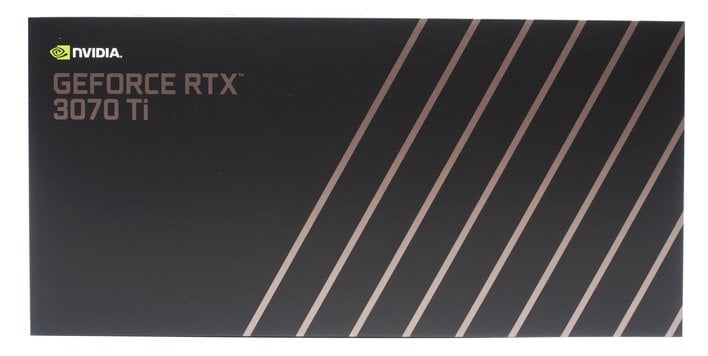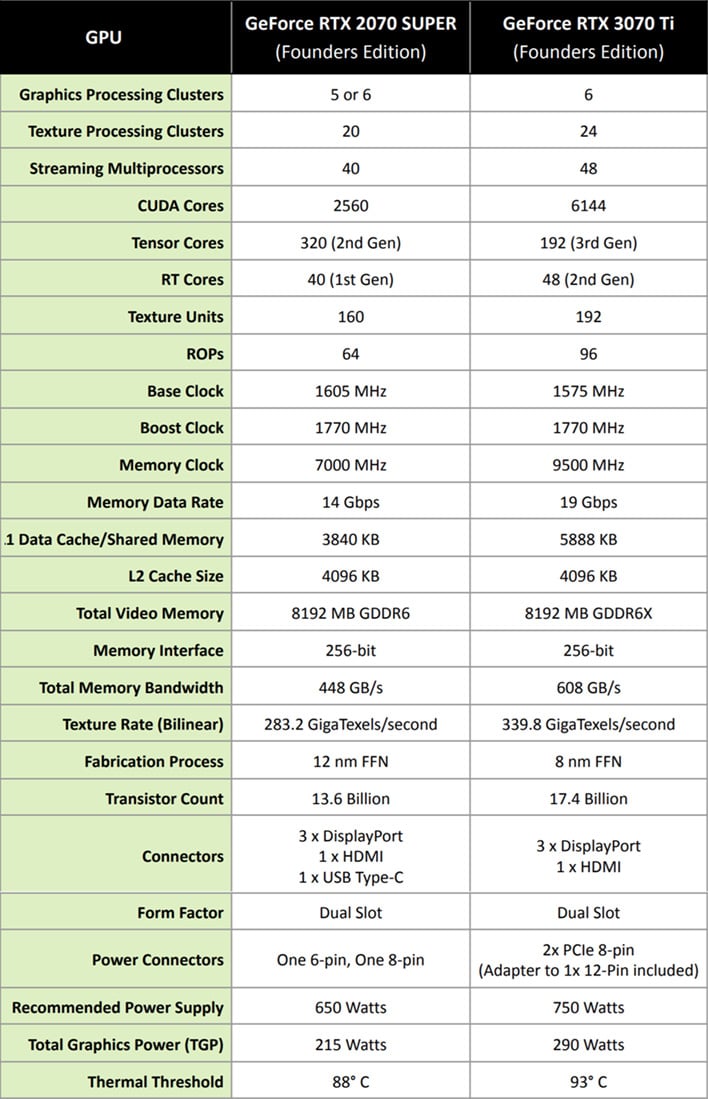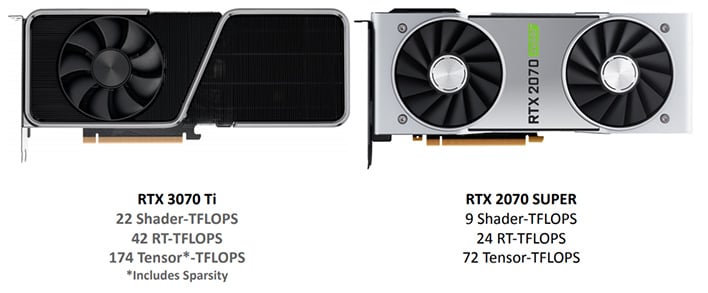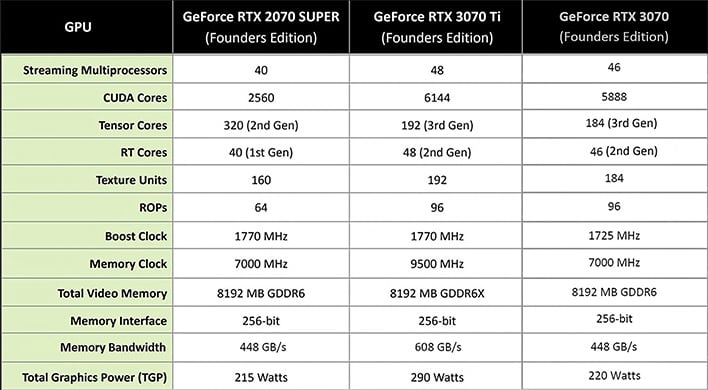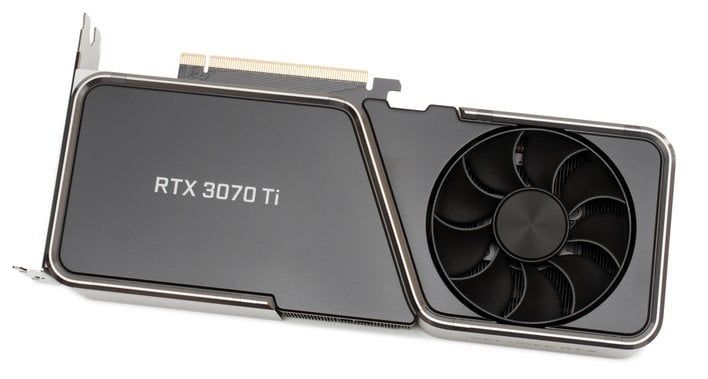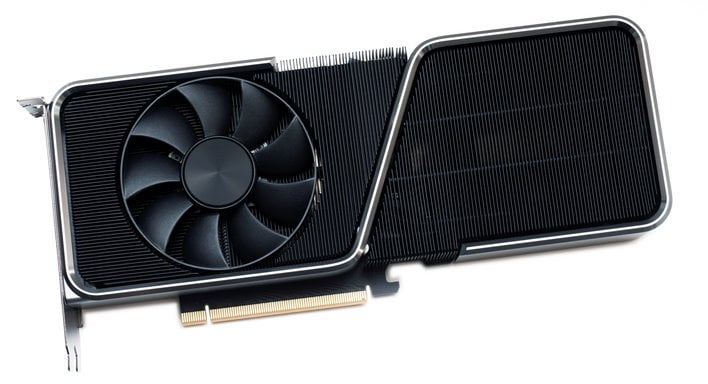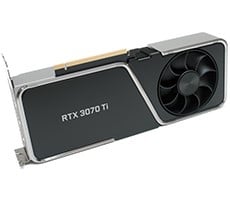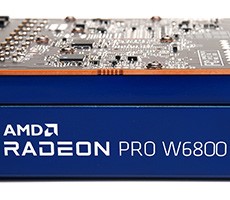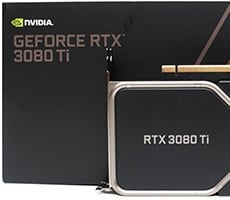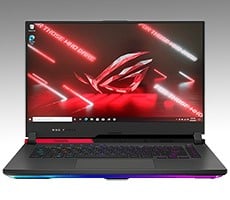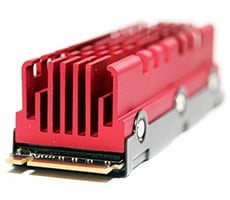GeForce RTX 3070 Ti Review: Supercharged Midrange Gaming
As its branding suggests, the GeForce RTX 3070 Ti is an update / upgrade over the original RTX 3070 which launched about seven months ago. NVIDIA didn’t just goose the clocks and call it day, however. Though its performance isn’t otherworldly versus the original standard card, the GeForce RTX 3070 Ti does have a number of significant and meaningful differences. Let’s look at its specs, a quick video tour and a couple of comparisons to previous-gen cards first, then we’ll dig in and get down to the nitty gritty...
|
NVIDIA is positioning the GeForce RTX 3070 Ti as the logical upgrade to the Turing-based GeForce RTX 2070 Super (and older / lower-end cards). As you can see in the table above, save for the similar boost clocks and memory capacity, the GeForce RTX 3070 Ti blows the RTX 2070 Super out of the water. The Ampere-based RTX 3070 Ti has significantly more memory bandwidth, much higher fillrate, and more capable compute performance.
But what about versus the original GeForce RTX 3070, you ask? Well, here above is a condensed comparison between the new GeForce RTX 3070 Ti, with the RTX 3070 added in. Although the 3070 Ti is built around the same GA104 GPU as the original 3070, it has a couple of additional Streaming Multiprocessors enabled, which boosts its core counts and cache. As a reminder, the GA104 is fabricated on Samsung’s 8nm NVIDIA custom process and is comprised of approximately 17.4 billion transistors, with a die size of 392.5mm2. In the GeForce RTX 3070, 46 SMs are enabled, but the GA104 has 48 total SMs, and they're all flipped on with the GeForce RTX 3070 Ti.
There are 128 CUDA cores per SM, for a total of 6,144, 4 Third-Gen Tensor cores per SM (192 total), and 48 Second-Gen RT cores. Complementing all of those cores are 96 ROPs, 192 Texture Unit, 5,888K of L1 cache / shared memory, and 4,096K of L2 cache. The GPU has a typical Boost clock of 1,770MHz and it is linked to 8GB of GDDR6X memory running at an effective speed of 9.5GHz via a 256-bit memory interface. That equates to over 600GB/s of peak bandwidth, which is a big jump over the original 3070's 448GB/s. The original GeForce RTX 3070 also uses standard GDDR6, not the faster GDDR6X of the Ti.
Before we dive any deeper into the GeForce RTX 3070 Ti though, we should direct your attention to a few previous HotHardware articles. We have already covered much of the underlying technology at the heart of this card, so we won’t be doing so again here. If you'd like a refresher on the backstory, however, we recommend checking out our coverage of NVIDIA’s initial GeForce RTX 30 series announcement, the deeper dive on its new features and the Ampere architecture as a whole, and our October coverage of the original GeForce RTX 3070 launch. Once you’ve got that all in your pocket, you’ll understand much of what makes the GeForce RTX 3070 Ti tick.
Meet NVIDIA's New GeForce RTX 3070 Ti
The cooling setup on the new GeForce RTX 3070 Ti is different than the original’s. In fact, the RTX 3070 Ti’s cooler is more akin to the RTX 3080’s – just slightly smaller. The GeForce RTX 3070 Ti is about 3/4 of an inch shorter than the RTX 3080, but a little longer than the original RTX 3070.Like the GeForce RTX 3080, the cooler on the GeForce RTX 3070 Ti Founders Edition features dual axial fans, and a split heatsink design. One end of the heatsink array sits directly atop a vapor chamber that is affixed to the GPU and memory, with a fan on top. That fan directs air through the heatsink and immediately funnels it out of the chassis through vents in the case bracket. The heatsink on the back half of the card, however, which is linked to the front vapor chamber via heat-pipes, allows air from the second fan to pass all the way through the card, where it is meant to rise to the top of the chassis and then expelled from the system, assuming the chassis has adequate ventilation.
The pass-through style cooler works in conjunction with a dense, short PCB design. Like earlier GeForce RTX 30-series Founders Edition cards, the new 3070 Ti also features a miniaturized 12-pin power connector, though most partner boards will continue to use the traditional PCIe connectors that are more common today. NVIDIA includes an adapter with the RTX 3070 Ti that converts a pair of 8-pin PCIe connectors to the new mini-12-pin design, and a number of PSU manufacturers offer modular cables with the new connector as well. This is another difference between the original RTX 3070 and the RTX 3070 Ti. The adapter included with the original card only required a single 8-pin feed.
Like most of the other members of the Ampere family, the GeForce RTX 3070 Ti has triple full-sized DisplayPorts and a single HDMI output on its case bracket. That HDMI port is HDMI 2.1-compliant, which enables 4K120P with G-Sync on some of the latest OLED TVs and allows for 8K resolution over a single cable.

